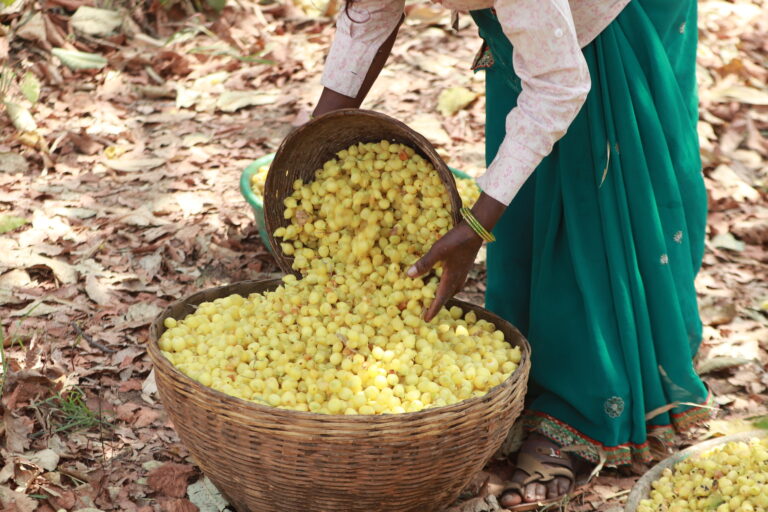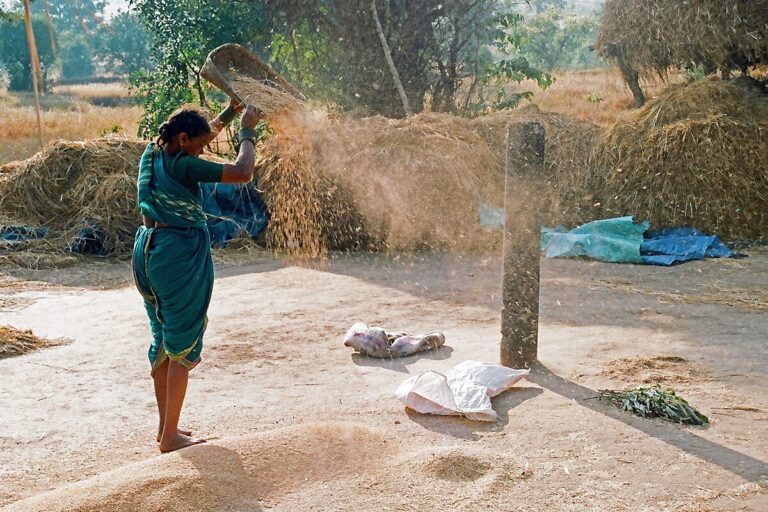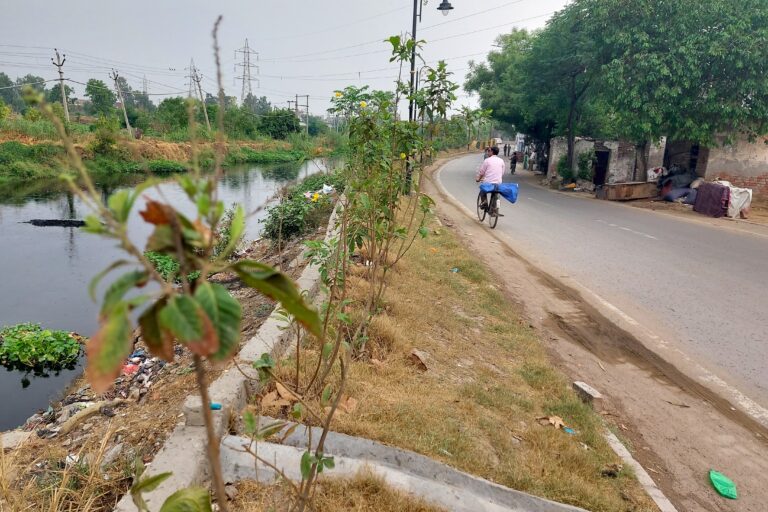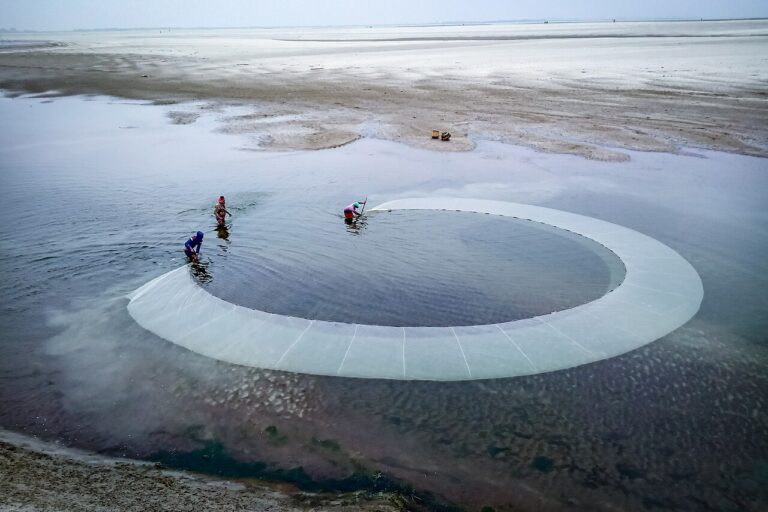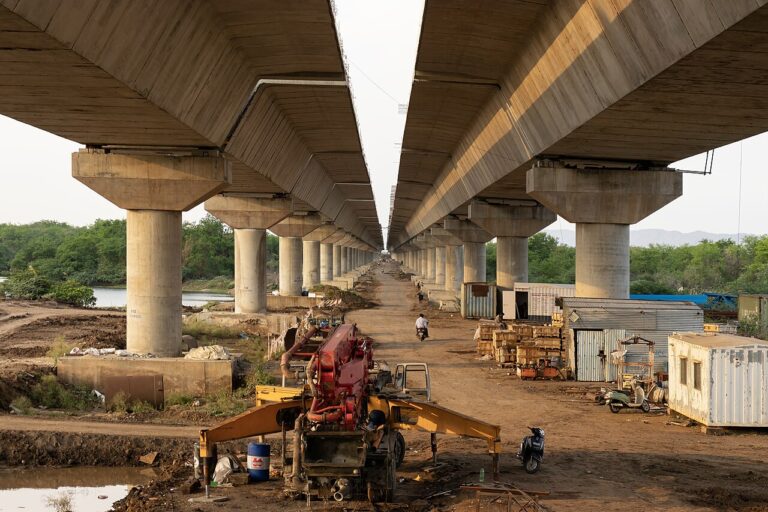- Farmers in Jharkhand depend on monsoon for agriculture and fail to utilise the full potential of their cultivable land due to lack of irrigation.
- However, the state is trying to change the situation with a scheme under which it is distributing solar pumps to increase irrigation capabilities.
- The state’s scheme, unlike a similar solar pump distribution scheme by the central government, also aims to prevent overexploitation of groundwater by not permitting the use of boring and groundwater for irrigation purposes.
Parmeshwari Devi is a farmer who owns agricultural land in the Khunti district of Jharkhand. A few years ago, she would often lament that she was not able to fully utilise her three acres of cultivable land to grow crops, because of limited access to irrigation. Her family would regularly run around to get diesel to operate the fuel-based pump for water. But a switch to a solar pump, provided by the state government, changed things for her.
Last year, she produced 1,200 kilograms (12 quintal) of paddy (rice) on her land. But after installing the solar pump in early 2021, she has been able to increase her production to 3,000 kgs (30 quintal) of paddy this year, which she sold for Rs. 36,000. Buoyed by the good returns, her husband Jhagru Pahan now plans to also grow vegetables during the rabi (winter crop) season. If yields continue to improve, the couple dreams of sending their three children to a city-based school for a better education.
Similar to Parmeshwari and Jhagru, there are many other farmers in the central Indian state of Jharkhand who, due to lack of irrigation facilities, are unable to utilise their entire agricultural land for sowing crops. Many are now switching to clean energy sources for agricultural-related works by opting for the state government’s JOHAR (Jharkhand Opportunities for Harnessing Rural Growth) scheme. The scheme, which started in 2017, aims to switch to solar pumps for irrigation to reduce the dependency of farmers on diesel, a source of pollution as well, and increase their income.
According to India State of Forest Report 2019, Jharkhand has a geographical area of 7.9 million hectares. Around 1.3 million hectares or 17.37 percent of the total geographical area, is net sown area. There is a significant potential agricultural area that remains unused.
Around 37 percent of the total land of the state is viable for cultivation, according to Jharkhand’s State Water Resources Department. But agriculture here, is heavily dependent on the monsoon rains that occur for a few months each year. Out of the total net sown area, irrigation facilities are confined to only 15 percent of the area and less than six percent of the farmers possess irrigation equipment.

Santosh Mali, a Ranchi-based senior scientist (Soil and Water Conservation Engineering) at the Indian Council of Agricultural Research (ICAR) Research Complex for Eastern Region, said that in comparison to the amount of groundwater recharge in the state, only 15 percent is extracted for irrigation.
Read more: Delays and glitches mar Uttarakhand’s solar self-employment scheme
Solar pump scheme aims to enhance irrigation potential
The JOHAR scheme was launched in 2017 to distribute solar power operated irrigation pumps to farmers to increase the irrigation area on their lands and in turn increase produce. Jharkhand’s State Rural Development Department received financial assistance of Rs. 143 million (Rs. 14.3 crore) from the World Bank and the state envisaged covering 13 districts and 39 blocks with the scheme.
“Till now, we have been able to take the scheme benefits to upto 11 districts and 36 blocks. This is a micro-lift irrigation-based scheme. There are two parts of the scheme. In one part, high power solar pumps will be given which have a capacity between 5-7.5 horsepower (HP). These could be installed at fixed places and have the potential to irrigate 15-20 acres (6-8 hectares) of land,” said Sanjay Das, State Coordinator (Irrigation), for the JOHAR scheme. In the other part there is a provision for the small and marginal farmers to use mobile solar pumps, which are low power ones with a capacity between 0.5-1 HP, said Das. Solar pumps were given to a group of farmers instead of one farmer to ensure their adequate and regular usage.
Under the scheme, the government has planned to distribute 1,310 fixed solar pumps and 1,000 mobile solar pumps by June 2022 to assist in the irrigation of 26,220 acres (10,600 hectares) of land and benefit about 23,580 farmers families.

The onus of management and ownership of these solar pumps, after receiving them from the government, lies with the community itself. Every group has been entrusted with the task of choosing one member from among themselves as their Technical Service Provider (TSP), who is trained to operate the solar pumps and take care of the maintenance.
Parmeshwari Devi is the TSP of her group. “There are 51 members in my women-led group out of which 35 are involved in farming. We collect Rs. 50 per day so that if we need repairs, the cost of the same could be borne through that,” Devi told Mongabay-India.
Read more: India’s biomass power sector meets target but stares at a stagnant future
The scheme focuses on water conservation
Providing free electricity and solar pumps to farmers, by the government, comes with its own challenges. Under the central government’s Pradhan Mantri Kisan Urja Suraksha evam Utthan Mahabhiyan (PM-KUSUM) Scheme, launched in 2019, for example, farmers get subsidies on the purchase of a solar pump and a total of 20 lakh (two million) solar-powered agricultural pumps are planned to be given to farmers across the country. However, the extraction of groundwater under the scheme has been a major concern for the environment.
A 2020 study on the consequences of this scheme in Rajasthan claimed that farmers often treat groundwater free from any restrictions which leads to excessive extraction. The study indicated that the use of solar pumps can lead to more extraction of groundwater.
At Jalgaon in Maharashtra, these impacts were already visible in 2019. Soon after the solar pumps were installed in the region, the dependence on the erratic power supply to run pumps, reduced. However, with greater ease and availability of water for irrigation by switching to solar pumps, the groundwater levels started depleting, raising environmental concerns.
“In states such as Punjab and Haryana, with free electricity given to farmers, excessive extraction of groundwater has been noticed. With solar pumps as well, there is the threat of excessive extraction of water,” Mandvi Singh, Programme Manager (Energy and Climate Change) at International Forum for Environment, Sustainability and Technology (iFOREST) told Mongabay-India.
Singh also emphasised that solar pumps have the potential to dominate diesel-based pumps in terms of economic value and their environmental value in rural India. “In areas, where solar pumps were distributed, the usage of diesel pumps reduced by 30-90 percent,” she said.

Ensuring that groundwater is not overexploited is crucial for a country such as India, which is increasingly facing water scarcity. A 2018 study claimed that in north India the groundwater levels are receding at a rate of 19.2 gigatonnes per year.
In comparison to the central government scheme, Jharkhand’s JOHAR scheme has a provision to discourage the extraction of groundwater. “Under the scheme, we have emphasised that we will give thrust to the utilisation of surface water reserves while there will be a ban on the use of solar pumps for groundwater extraction,” state coordinator Das explained.
Keeping in mind the water situation in Jharkhand, the importance of protecting groundwater levels increases manifold. The state mostly hosts surface water and there are 7,296 water reservoirs, 35,952 ponds, 361 waterfalls and 4,772 other surface water sources. Additionally, there are 2,663 water conservation and groundwater recharge dams in the state.
Despite all existing efforts, there is still a need for attention on preservation of rainwater. The state has been seeing a deficit of 1,200 mm of average rainfall annually. The lack of rainwater conservation strategy and facilities for groundwater recharge don’t help either.
“Around 75 percent of the rainwater runs through the small tributaries, drains and joins the prominent rivers of the state like Damodar, Swarnarekha and others,” said Satyabrat Acharya, state in-charge of NGO Pradan, who has been working on environmental issues for several years in Jharkhand. He, however, stressed that the JOHAR scheme is more likely to benefit the people of selected blocks who are in close proximity to a water reservoir or water bodies where perennial surface water is available.
Space for improving JOHAR’s implementation
Many experts argue that the rate of distribution of solar pumps under the JOHAR scheme has been very slow. While the state government had planned to distribute 1,310 fixed solar pumps under the scheme, by June 2022, so far, in the last three years, 850 solar pumps have been installed. To meet the target, the state has to provide 460 more solar pumps in less than a year.
Several farmers in the Murhu Block of Khunti district are awaiting the installation of a solar pump. Ramul Soye is a resident of Jamra village who is anxiously awaiting its distribution in his local areas. “Our group had applied around a year ago but still did not receive anything,” he said.
Similarly, the mobile solar pump distribution is also moving at a slow pace. By June 2022, the government had planned the distribution of 1,000 such pumps but till now only 400 units are given. This means the government has to give 600 more mobile solar pumps if it wants to achieve the target by next year.
This story was supported by the Solutions Journalism Network LEDE fellowship.
Banner image: Women-led group takes care of solar pumps after receiving them from the government. Photo by Srikant Chaudhary.
Mongabay-India, is hosting a series of informative webinars called Clean Energy Talks. Sign up for the webinar Financing India’s Clean Energy Journey on October 26, 4 PM-5:30 PM at this link:
https://us06web.zoom.us/webinar/register/6016342889527/WN_6pTN0_bCQWq0JFfs-gZ-jg






